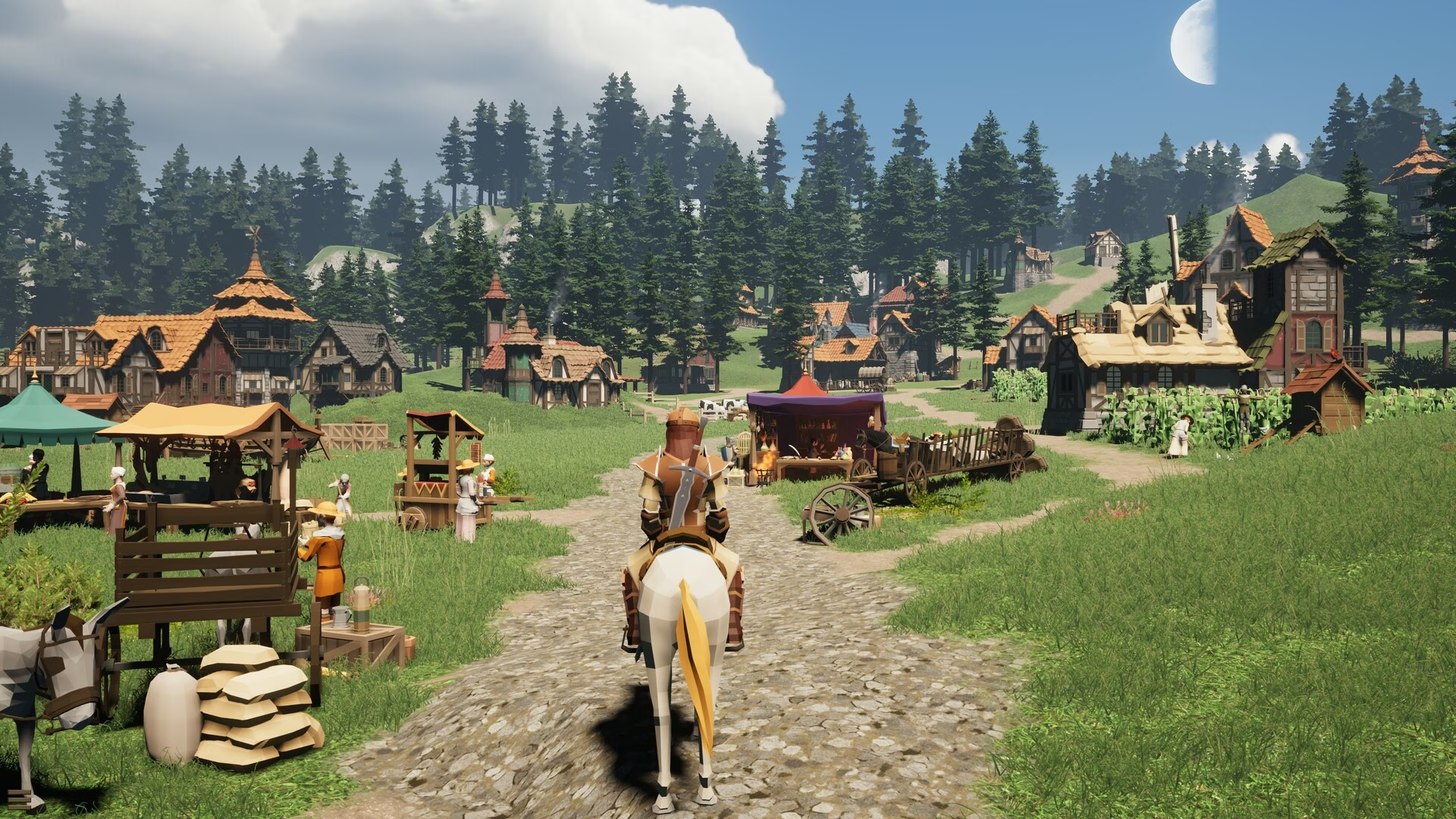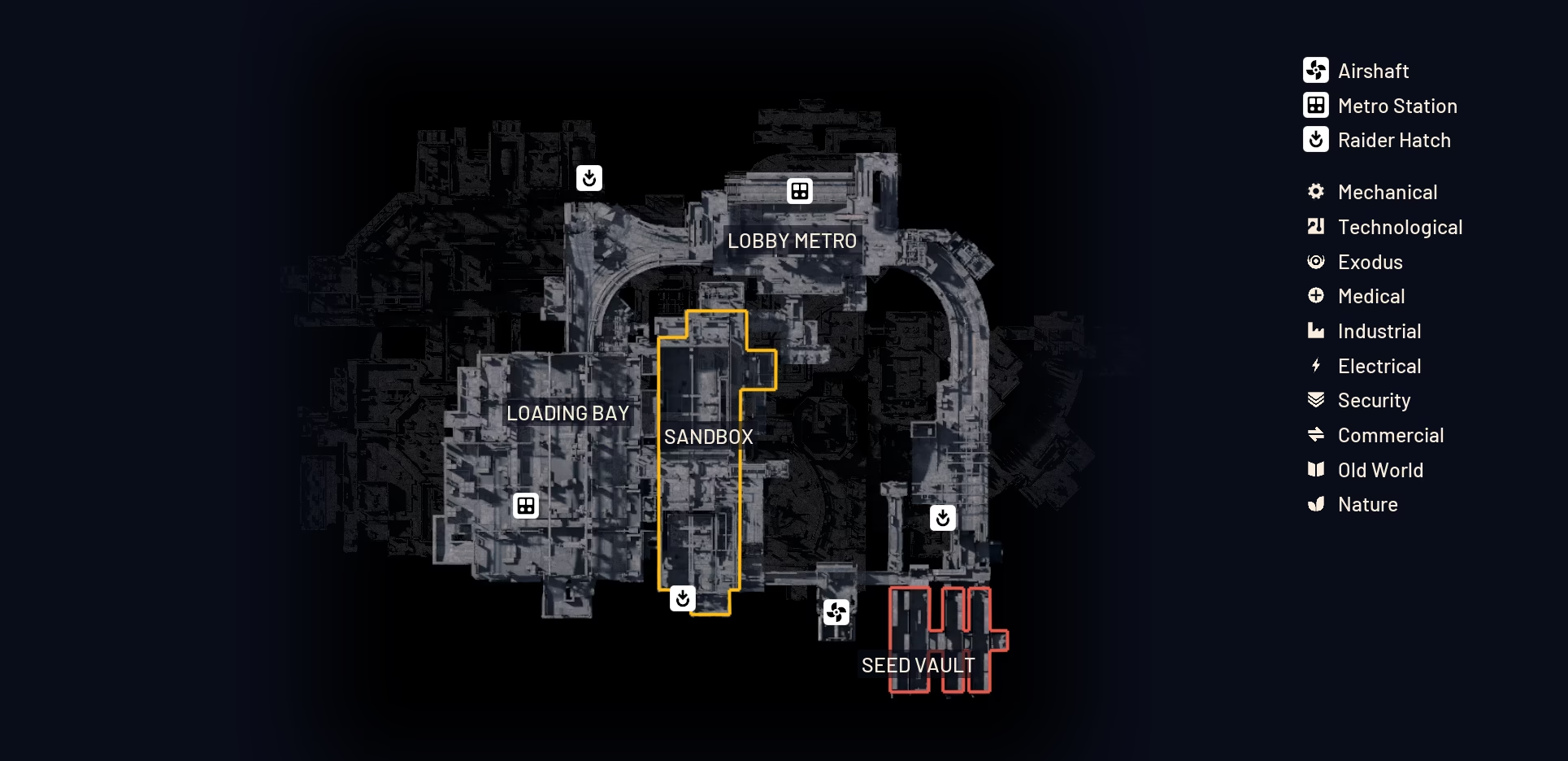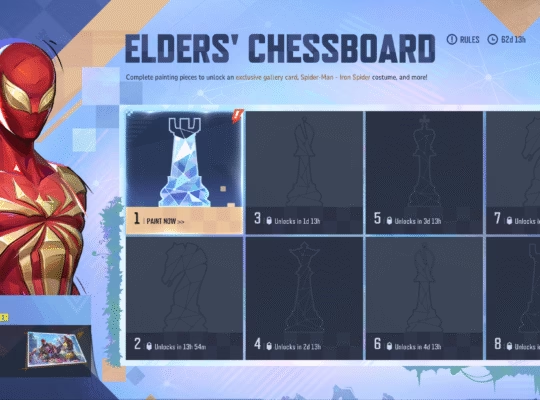Hey everyone, Elias here. In the gaming world, we get so focused on the next big AAA drop, the next live-service season, or the Marvel Rivals meta (which I’m still grinding, by the way) that we sometimes miss the real magic. For me, that magic is often brewing in the indie scene. This is where you find the true passion projects, the wild genre-mashes that a big publisher would never greenlight.
And folks, I’ve got one on my radar that is ticking all the right boxes.
It’s called Dungeons & Kingdoms. It’s being pitched as a hybrid that blends kingdom building, deep villager management, and third-person dungeon crawling. Think Manor Lords meets Medieval Dynasty, with a healthy dash of Valheim or even soulslike combat.
Here’s the kicker: it’s being made by Uncle Grouch Gaming, which is a Canadian studio powered by a solo developer, Lincoln McCulloch. The sheer ambition of one person tackling three distinct genres is staggering.
With the game slated to hit Steam Early Access on November 17, 2025, it’s time to dive deep and set our expectations. What is this game really offering, and can a solo dev actually pull it off? Let’s get into it.
The Three Pillars: What Kind of Game is This?
Dungeons & Kingdoms isn’t just one thing. It’s a complex machine built on three core gameplay loops, or “pillars.” I love this approach because it promises to solve the “endgame” problem many building games have. You don’t just build to build, you build to support your other goals.
Pillar 1: The Kingdom Builder
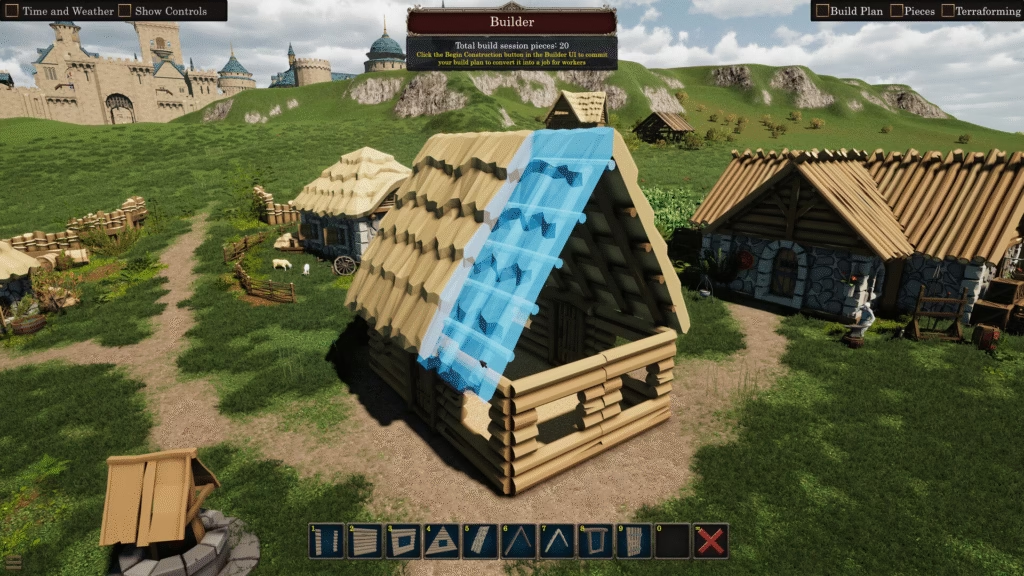
This is the Manor Lords or Valheim part of the equation. You start as a refugee leading a small band to a new, untamed land. From there, it’s all about survival and construction. We’re not just plopping down pre-made houses. The game features a modular, piece-by-piece building system with (according to the dev) hundreds of unique pieces. This means you can design your own unique cottages, keeps, and taverns.
If you’re not a master architect, you can create and use blueprints. Better yet, the game already supports Steam Workshop for sharing blueprints, which is a fantastic community-building move right out of the gate.
It also includes full-on terraforming. You can flatten land for farms, dig moats for defense, or raise plateaus for your citadel. For players like me who just want to build the fantasy castle of their dreams without the grind, there’s even a “God Mode” (Creative Mode) to let you build freely.
Pillar 2: The Management Sim
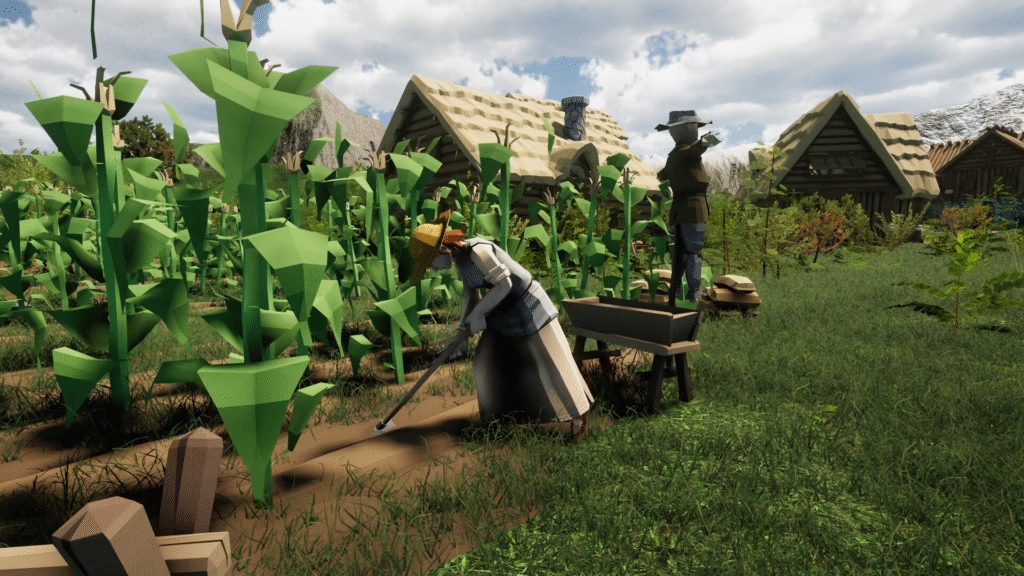
This is the Medieval Dynasty or RimWorld pillar. You aren’t just building empty structures. You have to manage your villagers. These aren’t just mindless drones. Each colonist has unique skills, personalities, and, most importantly, needs. You have to keep them fed, sheltered, and happy.
This involves setting up supply chains. You’ll need to forage and farm for food, hunt animals, and craft tools. You can assign your villagers to jobs, like woodcutting, farming, or blacksmithing, and watch your tiny refugee camp slowly evolve into a bustling economy. This loop is critical. A strong village means better supplies, which directly fuels the third pillar. The game also features a full day/night cycle and changing seasons, which will absolutely impact your resource management.
Pillar 3: The Dungeon Delver
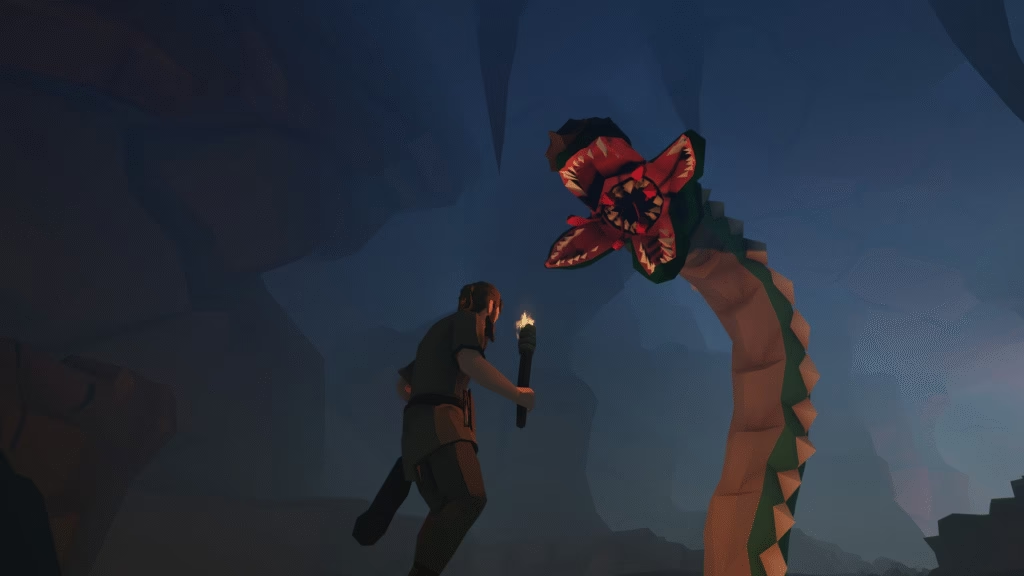
This is where things get really interesting for me. All that building and managing serves a purpose: to equip you and your villagers to fight. Dungeons & Kingdoms is a third-person action RPG at its core. You can venture out from your village walls to explore ancient ruins and dive into dangerous dungeons.
These dungeons are filled with monsters and, of course, boss fights. The combat has been described as “soulslike,” which implies a certain level of challenge and deliberate, stamina-based action.
The hook is the loot. Defeating these bosses and clearing dungeons rewards you with new, rare resources. These resources are what you use to “advance your tech.” This is the perfect gameplay loop. You delve into dungeons to get materials, use those materials to unlock better buildings and gear for your town, which in turn makes your villagers more productive and allows you to tackle even harder dungeons. It’s a self-sustaining cycle of adventure and progress.
The Solo-Dev Ambition: Early Access vs. The Full Dream

This all sounds incredible, right? A seamless blend of three of my-favorite genres. But we have to ground ourselves. This is a solo-dev project, and it’s launching into Early Access. That means what we play next week is not the final product.
The developer, Lincoln McCulloch, has been very open about this. The Early Access launch is the foundation. The initial release on November 17 will be single-player only. It will feature the core mechanics of all three pillars so we can get a feel for the game, but the grand-scale features are still on the roadmap.
The dev estimates the game will be in Early Access for about a year and a half. The plans for the full 1.0 version are where the real hype is. We’re talking a full story-mode campaign, different playable races, new quests, defensive “raid” events, full modding support, and the biggest one of all: co-op multiplayer.
Here’s a quick breakdown of what to expect now versus what’s planned for later.
| Feature | Early Access (Starts Nov 17, 2025) | Planned Full 1.0 Version |
| Player Mode | Single-Player Only | Co-op Multiplayer |
| Main Loop | Sandbox Building & Dungeon Delving | Full Story-Mode Campaign |
| Content | Core building, managing, and combat | New Playable Races, Quests |
| Events | Basic world simulation (seasons, etc.) | Defensive Events (Raids) |
| Community | Steam Workshop (Blueprints) | Full Modding Support |
| Price | $19.99 (with 10% launch discount) | Likely a higher price |
This transparency is good. It manages our expectations. We are buying into the start of a journey, not a finished product.
Keeping Expectations in Check: The Demo Feedback
The game already has a ton of momentum. It’s nearing 200,000 wishlists on Steam, which is a massive achievement. A lot of this hype came from its demo during the recent Steam Next Fest.
I’ve been digging into the community feedback from that demo, and it’s a mixed (but predictable) bag. Many players, like me, see the incredible potential. They love the idea of the three pillars.
However, there’s also been a lot of constructive criticism. Many players reported that the demo felt very early, with some calling it “barely an alpha.” The most common complaints centered on a “counter-intuitive” user interface (UI) and clunky systems. This is, to be blunt, extremely common for a solo-developed game of this complexity. UI design is its own special kind of nightmare.
There was also some chatter about a “passive-aggressive” startup screen that apparently gave players two options: “I agree this is a work in progress” (which lets you play) or “I only play polished games” (which quits the game). While I get the dev’s sentiment, that’s the kind of transparency that can definitely rub some gamers the wrong way.
My take? This is exactly what Early Access is for. The dev is getting this feedback before the 1.0 launch. The UI can be fixed. Systems can be polished. The hard part, the vision, is already there.
My Hot Take: Why Dungeons & Kingdoms is a Must-Watch
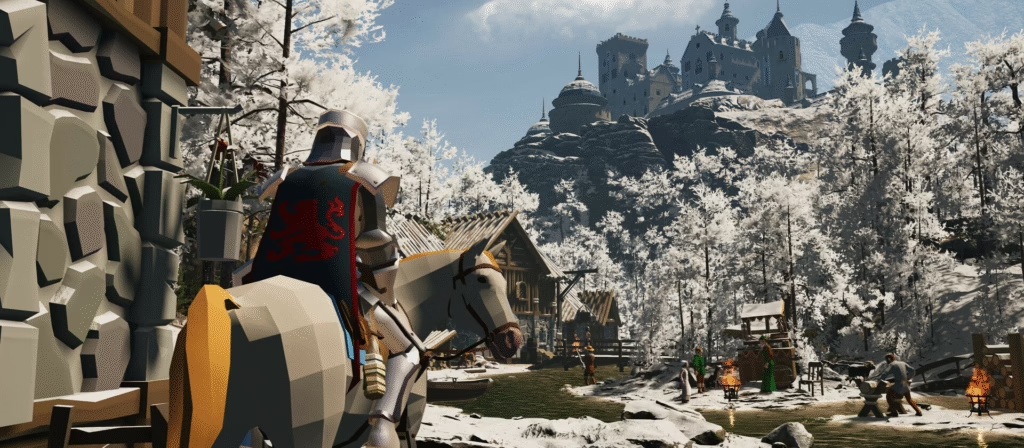
So, am I worried? Not at all. I’m energized.
The promise of a game that truly bridges the gap between a deep builder and a compelling ARPG is a holy grail for many of us. I’ve sunk hundreds of hours into Valheim, and my favorite part was building a massive mead hall after a dangerous boss run. Dungeons & Kingdoms is building its entire identity on that exact loop.
The fact that this is coming from a single person is not a weakness, it’s a sign of a clear, unified vision. We don’t have to worry about competing ideas from different departments. We just have to worry about giving one guy enough time (and coffee) to get it all done.
Here’s what I am personally most hyped to test on day one:
- The Modular Building: I really want to see how flexible this system is. I plan on using the Creative Mode to try and build a replica of a Marvel Rivals map, just because I can.
- The Loot-to-Tech Pipeline: How satisfying is it to bring back loot from a dungeon? Does it feel like a meaningful upgrade for my village, or just another resource to check off a list?
- The Villager AI: How smart are the villagers? Managing a town can be fun or it can be a micromanagement nightmare. I’m hoping for the former.
- The Combat Feel: “Soulslike” is a heavy word. I need to know if the combat has weight. Does dodging feel responsive? Does landing a heavy attack feel impactful?
The Journey Begins November 17th
Dungeons & Kingdoms is, without a doubt, one of the most ambitious indie projects of 2025. It’s a love letter to three different genres, all wrapped into one package by a single, dedicated developer.
Yes, it’s going to be rough at the start. It’s Early Access. We have to go in with patience and a willingness to see the potential through the bugs. But if Uncle Grouch Gaming can pull this off, if he can deliver on even half of his 1.0 promises, this could be a game we talk about for years.
We will be following its development, its patches, and its journey toward co-op very closely right here in our Gaming Insights category at Rivalsector.com.I’ll be jumping in on November 17th to start my first refugee camp. I want to know what you all think. Are you planning on picking up Dungeons & Kingdoms? Let me know in the comments which of the three pillars you’re most excited to dive into!


